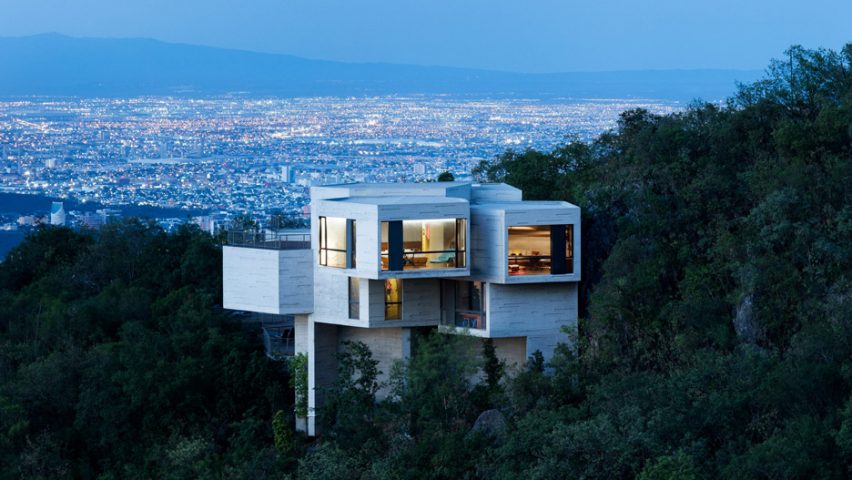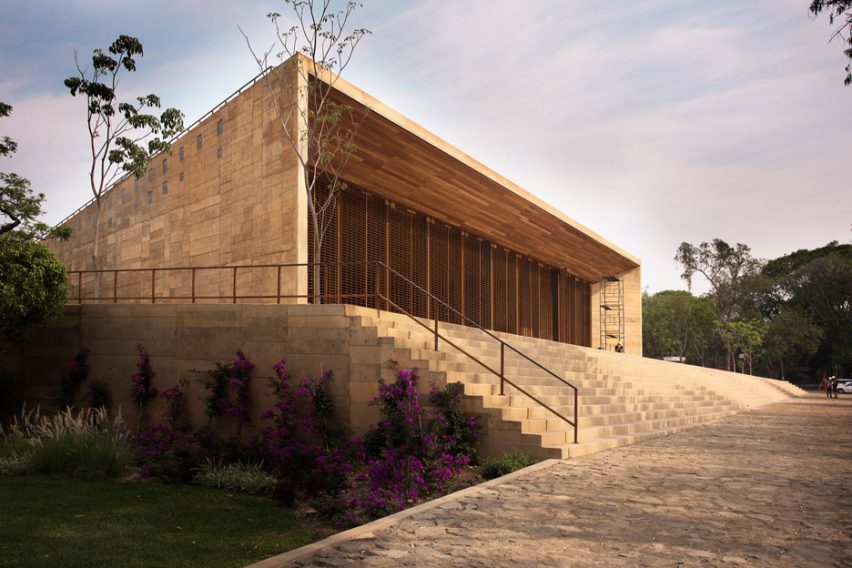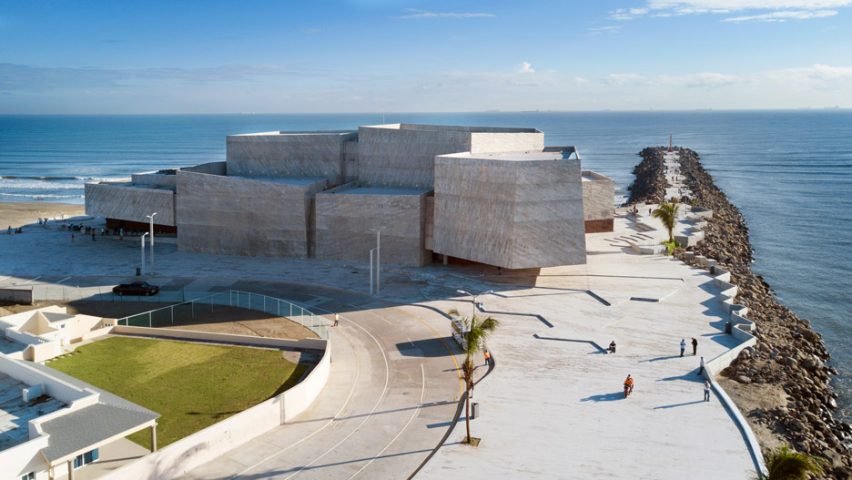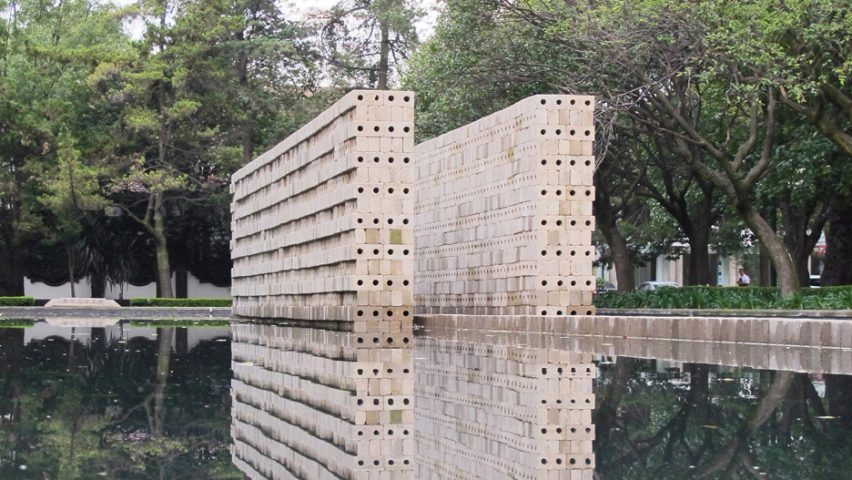Mexican architecture "more like a spirit than a style" says Frida Escobedo
In the second of a series of short movies about Frida Escobedo, the Mexican architect describes the architecture scene in her home country.
Speaking exclusively to Dezeen in London, Escobedo said that contemporary Mexican architecture is united more by the way in which it responds to challenges than by a common aesthetic.
"Mexican architecture is informed by its context," she said. "You make what you see and become creative with what you know and what you are nurtured with."

"It's not something that you can define in terms of a shape or a colour, but more about the strategies that we follow to create opportunities out of crises," she continued. "And so, I think it's more like a spirit rather than a style."
Escobedo described a layered and dynamic Mexican architecture scene made up of distinct generations.
There is the generation of Tatiana Bilbao, Michel Rojkind, Derek Dellekamp and Francisco Padro, she said, followed by that of Isaac Broid and Miquel Adrià.
Her own generation features Mexico City firm Productora, which collaborated with Broid to design the Oscar Neimeyer Award-winning Teopanzolco Cultural Center.

She also highlighted an emerging generation of young practices that includes Lanza Atelier and Escobedo Soliz, both of which are based in Mexico City.
According to Escobedo, the challenges faced by Mexican architects have encouraged an atmosphere of creative collaboration and competition between studios that spans these various generations.

"Now in Mexico we have very interesting scenario where you have a lot of creative freedom but there are lots of challenges," she said.
"We live in a constant crisis but I think we've just learned to work with that and instead of that being a difficulty, we've learned for it to become an opportunity," she continued. "This provides room for collaboration."
"We are not just collaborating with offices that are our age but also with offices that are more established or younger and I think that creates a very fertile ground for creativity."

Escobedo was born in Mexico City in 1979 and set up her own studio, Frida Escobedo, Taller de Arquitectura, in 2006.
She is the youngest architect yet to have been commissioned to design the prestigious Serpentine Gallery Pavilion.
Her 2018 pavilion, which was open to the public in London's Kensington Gardens last summer, featured a courtyard and pool of water, framed by latticed walls and a mirrored canopy.
Escobedo is one of the judges for Dezeen Awards 2019.
Below is a transcript of the interview:
"I think Mexican architecture is informed by its context. It's everywhere you know. So you make what you see and become creative with what you know and what you are nurtured with. So yes, there must be like a common language because we share the same cultural background but I'm sure that it has many nuances.
"So it's not like it's something that you can define in terms of a shape or a colour but more maybe about the strategies that we follow to create opportunities out of crises. And so, I think it's more like a spirit rather than a style.

"Now in Mexico we have very interesting scenario where you have a lot of creative freedom but there are lots of challenges. We live in a constant crisis but I think we've just learned to work with that and instead of that being a difficulty, we've learned for it to become an opportunity.
"This provides room for collaboration. We are not just collaborating with offices that are our age but also with offices that are more established or younger and I think that creates a very fertile ground for creativity.
"There are many generations of architects that are working in this scenario. There's the generation of Isaac Broid and Miquel Adrià. But there's also the generation of Tatiana Bilbao, [Michel] Rojkind, Dellekamp and Francisco Padro.
"And then there's my generation and then there's a younger generation. My generation is more with Productora and then the younger generation is Lanza Atelier, Escobedo Soliz.
"It's really funny because when you talk about it with other colleagues from outside Mexico they're really surprised that sometimes we're competing against each other for a project and then the next day we're working together for another project. It's this kind of very healthy competitive scenario where we can be competing sometimes but then we collaborate."